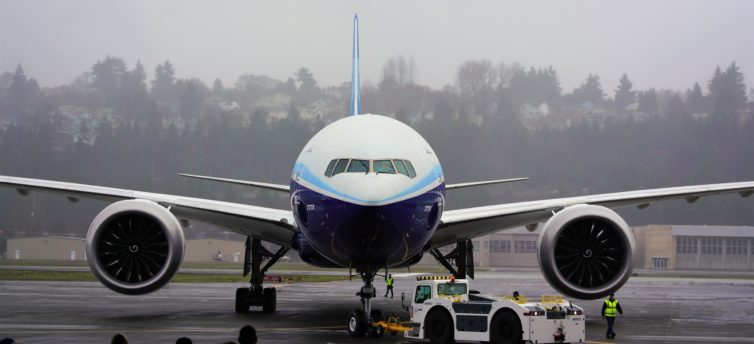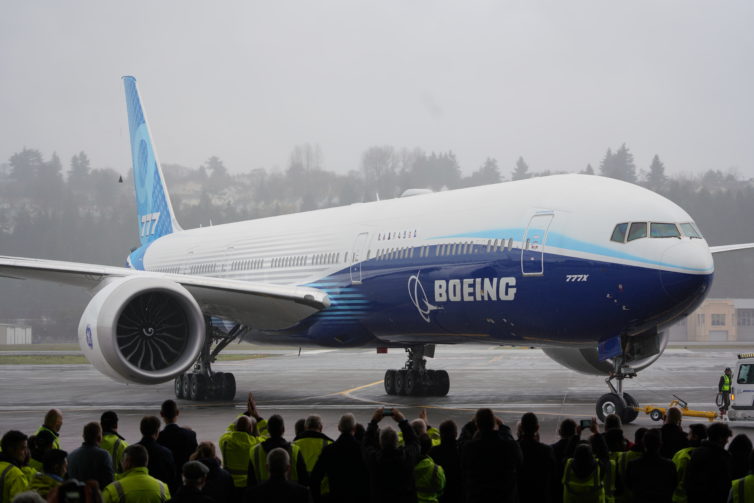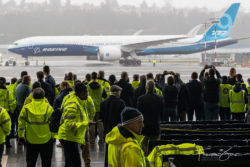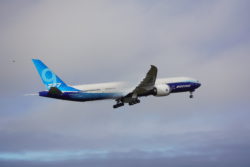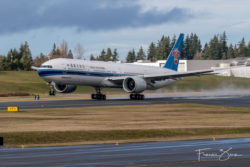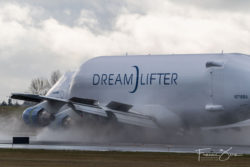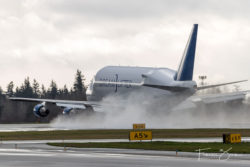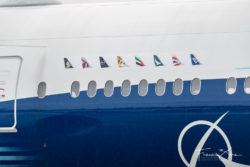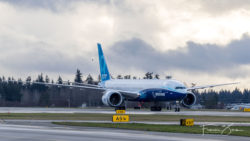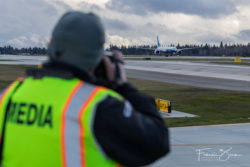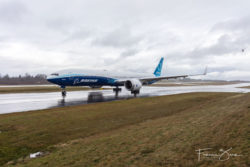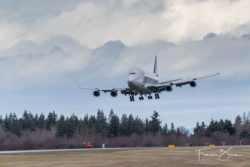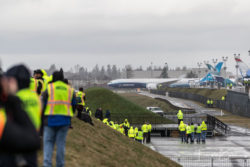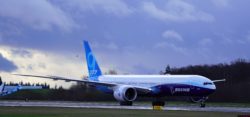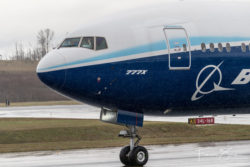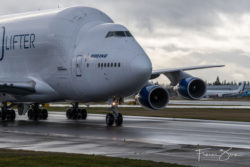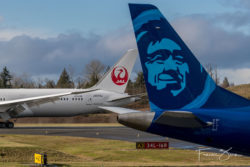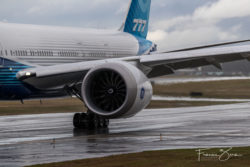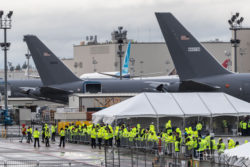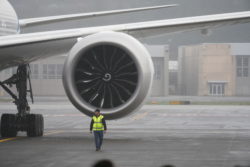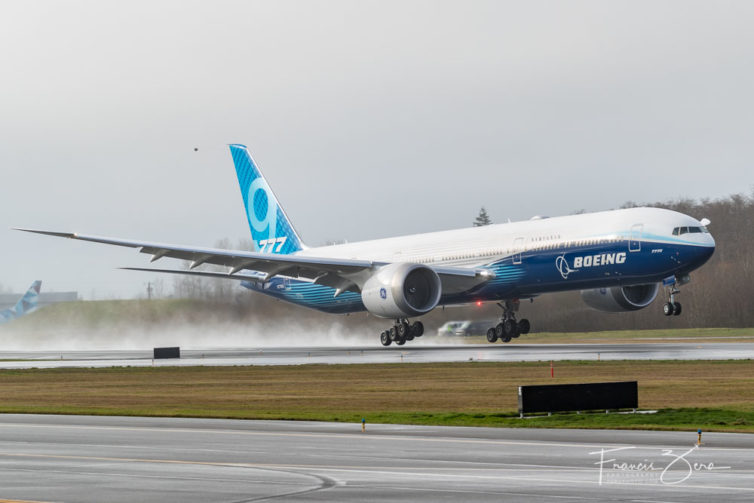
After a series of technical and weather delays, Boeing’s 777X finally took off for its inaugural flight at 10:09 a.m. on Saturday, Jan. 25, 2020
Things in the world of Boeing haven’t been going so great lately and the company needed a win. A few weeks ago, on a cloudy Saturday, there was finally something for the airplane manufacturer to cheer about: The Boeing 777-9 took off from Paine Field in Everett, Wash., on its inaugural test flight. Once airborne, one of the two pilots reported, ’œAll flight controls are good. Very solid.’ A crowd of two hundred or so stood in awe as the big bird took off, then erupted in applause, high-fives, and hugs. For many, the excitement might have been as much about the new aircraft as it was for the company itself.
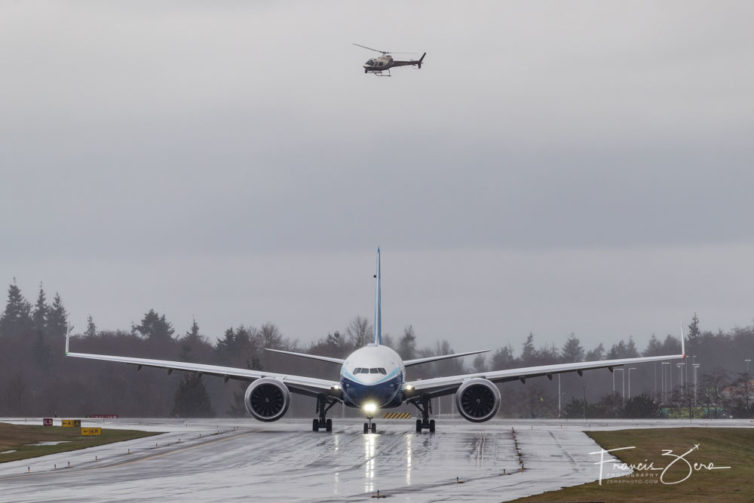
Boeing’s 777X taxies out on Friday, Jan. 24, for what would be five hours on the taxiway before the attempt was scrubbed due to poor weather
’œThis major milestone for the #777X airplane program begins the next critical phase of testing as we work towards certification and then delivery to customers in 2021,’ Boeing tweeted after takeoff. And thus began what is hopefully a more positive direction for the Chicago-based company.
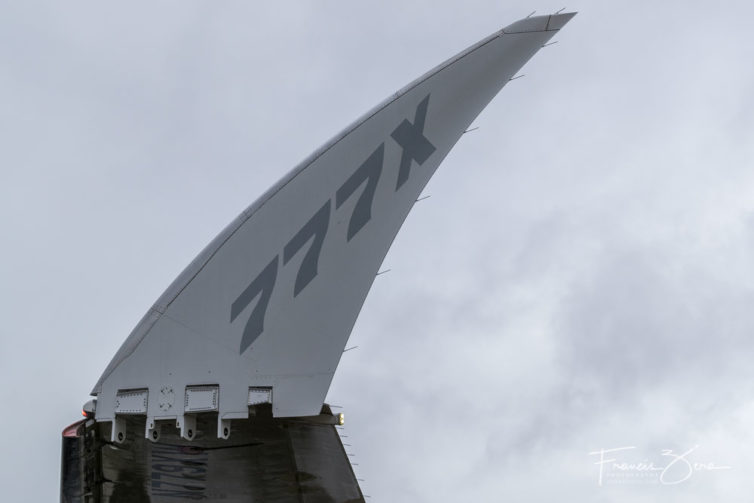
The 777X’s signature folding wingtips were on full display
Background on the new Boeing 777X
The 777X-family jet is powered by a pair of GE9X turbofans (which are the world’s largest and were originally tested on a 747-400) and has the maximum passenger capacity of 426 in a two-class layout. The largest of the two, the 777-9, is is 251 feet 9 inches long and the smaller 777-8 is 229 feet. The Boeing 747-8 is 1.5 feet shorter, while the Airbus A380 is over 13 feet shorter than the 777-9. Equally impressive is the wingspan. Both aircraft have the same span of 235 feet, 5 inches. The wingtips themselves are 11 feet long and are able to fold, so that the jetliner can fit into standard airport gates. Even novice AvGeeks shouldn’t have any issues identifying the 777X at the gate!
During the celebration, one Boeing spokesperson called it ’œthe marquee airplane,” and there is good reason why.
It is also said to be the world’s most fuel-efficient twin-engine jet, in part because the massive GE jet engines allow the airplane to fly at higher altitudes, where it will use less fuel. Boeing officials pegged the fuel savings at around 13% per passenger seat compared to the 777-300ER.
This family of jets has been called the heir apparent to the iconic 747, which went on its first flight almost 50 years ago. Replacing the older four-engine beasts with the 777X powered by more efficient engines will not only save airlines money, but also reduce carbon emissions. However, to make an impact on the bottom line, and the environment, airlines need to purchase the aircraft.
Even though the current generation of 777 has been a sales success (with over 1,700 orders, 838 just for the 777-300ER), orders for the 777X have been underwhelming. To date, the company reports 309 orders, most of which are from Emirates Airline. Emirates had ordered 150, but has since reduced that order to 115. Qatar Airways has ordered 60; British Airways ordered about 40; and several other airlinesincluding All Nippon Airways, Cathay Pacific, Lufthansa, and Singapore Airlineshave ordered 20 each.
Boeing had expected Chinese airlines to order the new jet, but trade tensions have kept the country from showing interest, at least so far. Many analysts say airlines are likely to take a wait-and-see attitude toward the plane, in no small part due to its hefty price tag (the list price for a 777-9 is $442.2 million).
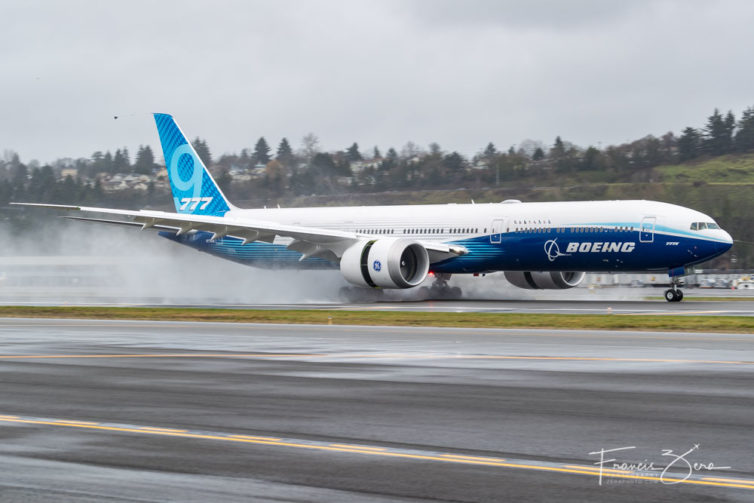
The 777-9 kicks up a big plume of spray as it lands on a wet runway at Boeing Field after its first flight
The Boeing 777X Set Backs & Delays
The Jan. 25 inaugural 777-9 flight officially kicked off a flight test campaign that is expected to eventually lead to certification in 2021 — about a year behind Boeing’s original schedule. Of course Boeing is no stranger to being behind on delivery schedules: the Dreamliner (which has recently slowed production), the 747-8 (which was delayed and didn’t turn out to be a great seller), the military KC-46 (based on the commercial 767), and of course the infamous 737 MAX.
The 777-9 was scheduled to have its first test flight in the second quarter of 2019, but problems with the GE9X engine’s compressor pushed the schedule back. Additionally, a cargo door blew off during a ground pressurization stress test, adding to delays and headaches for Boeing.
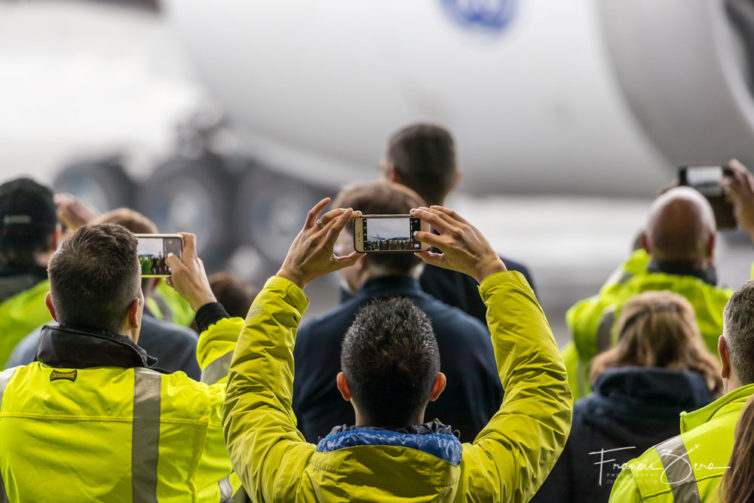
Boeing employees documented the arrival on their phones
The problems facing Boeing and the 777 didn’t seem to matter that much as we waited out in bad weather on Friday before the bird successfully took off on Saturday January 25, 2020. We were excited to witness history and be around others (media, employees, and AvGeeks) who shared our passion.
The plane needed to take off to the north and head out over water for safety precautions, which meant wind speeds had to be 10 knots or less. On Friday, winds gusted up to 30 knots, making takeoff impossible. It was disappointing, but at least the day was not lost. We were still able to chat with other media friends/colleagues and of course watch other planes come and go around Paine Field.
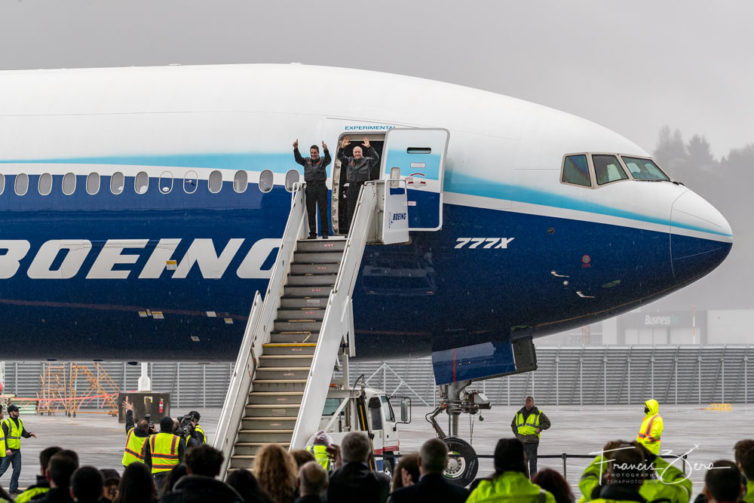
777X chief test pilot Van Chaney and co-pilot Craig Bomben looked triumphant after the flight
Fly Baby Fly! The Boeing 777-9’s First Flight
Luckily for all, Saturday’s winds were more calm. The crowd on hand in Everett was smaller since it wasn’t a scheduled work day, but still a couple hundred were present to cheer the plane on. The folding wingtip action and the incredible size of the wingspan had people agog. And at 10:09 a.m., the massive bird kept its audience spellbound as it took off, with a T-33 chase plane in formation. The 777-9 successfully flew for about 4.5 hours, before landing at Boeing Field (KBFI) in Seattle at 2:30 p.m.
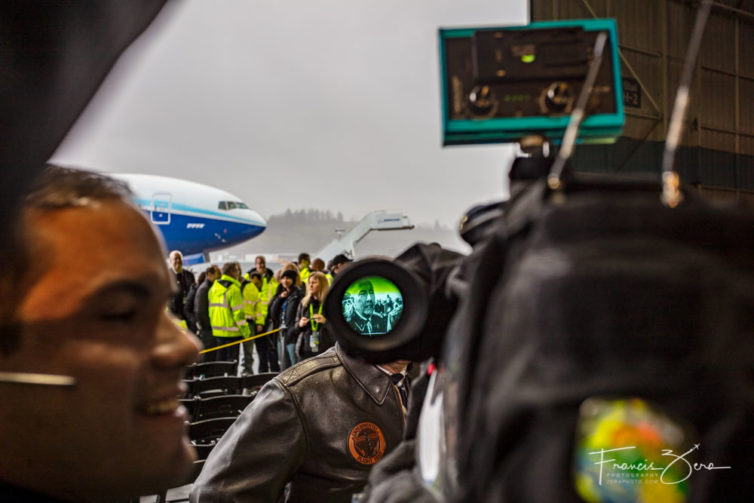
The news media interviewed the pilots after landing
Boeing employees traded high fives and hugs as the bird soared. Social media lit up as well. ’œMassive, gorgeous bird,’ wrote one fan. ’œYou get a real appreciation for the size of the wingspan when it turns onto the runway.’ Another chimed in, ’œRanking high on the list of cool things to witness, #777X taxis into position @FlyPaineField.’
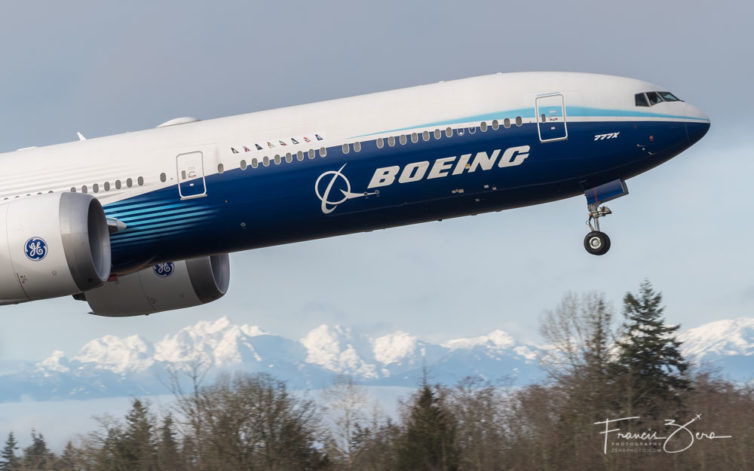
There was a sun break just as the 777X took off from Paine Field on Jan. 25
’œThis airplane, for me, is the flagship for the big airlines around the world,’ said Wendy Sowers, Boeing’s marketing director for the 777X. ’œIt represents the great things we can do as a company.” We hope that she is right. Boeing has a lot riding on the 777X and we will remain optimistic in its success.
Photo Gallery of the 777X and Other Aircraft
This story was written by contributions from Tom Harris, Francis Zera, and David Parker Brown. Great teamwork guys!
